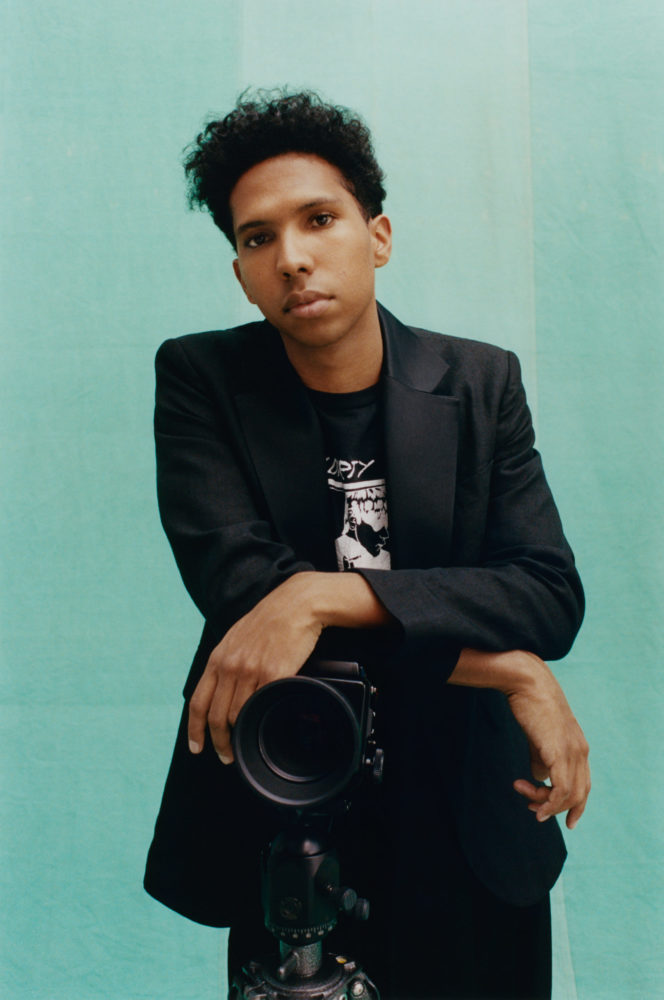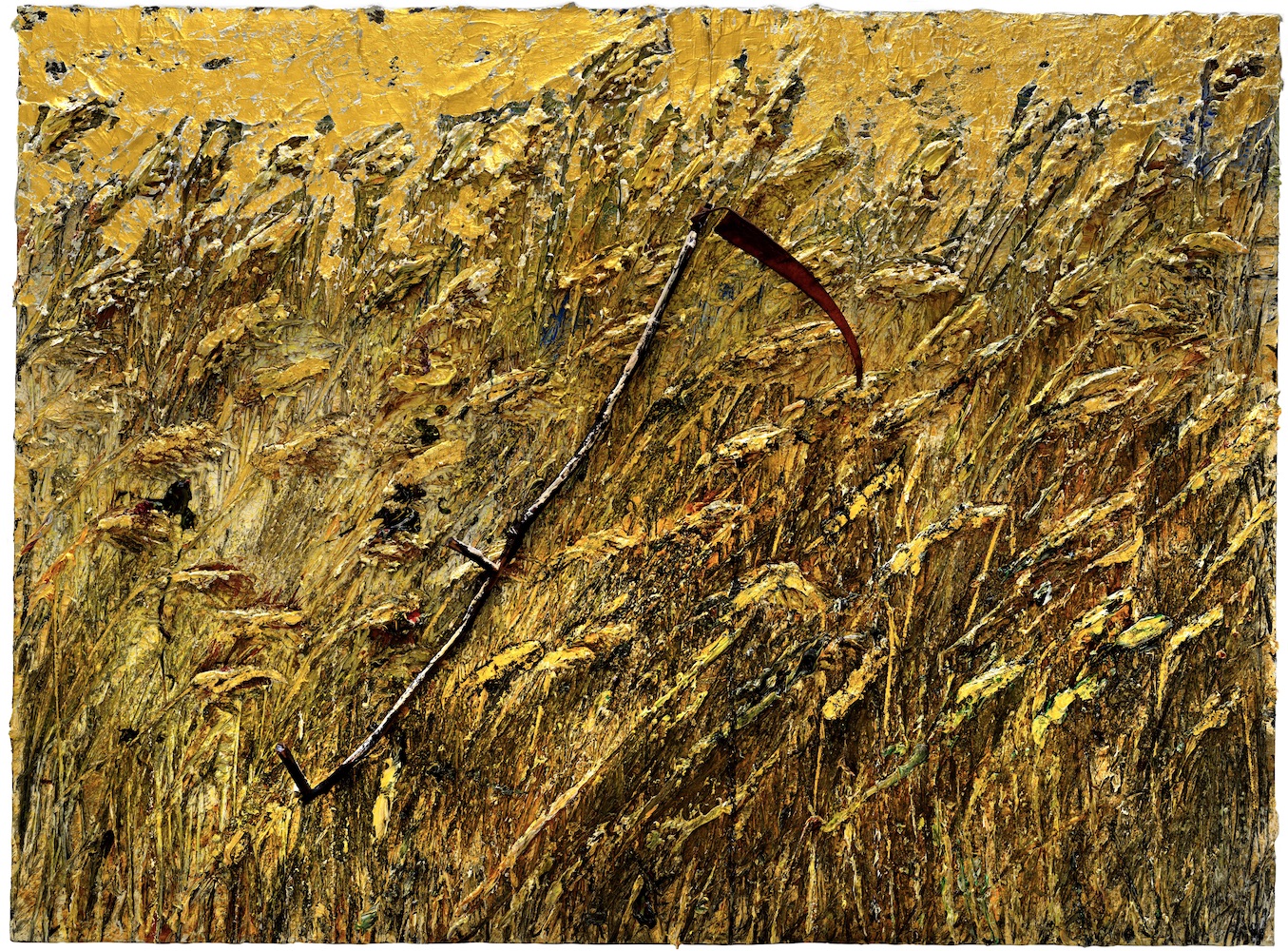Just a few years ago, Tyler Mitchell came into fashion photography by accident. It was 2015 and he was a student at NYU, traveling in Cuba with a documentary photography class. His teacher Adrian Fernandez was gauging the class’s progress and pointed out to Mitchell that his photographs looked like fashion images. It hadn’t occurred to Mitchell that dressing his friends up in clothes he liked and taking photographs of them could be something so prestigious sounding as “fashion photography,” but that’s exactly what it was.
Since, he’s photographed Spike Lee for the cover of Office magazine, worked with Solange Knowles, and captured Emma Gonzalez and other young activists of the “March for Our Lives” movement for Teen Vogue. He photographed Beyoncé in 2018 for the cover of American Vogue, becoming the first Black photographer to ever shoot the magazine’s cover. Most recently, his images of Kanye West appeared on the cover of GQ, as well as Alexandria Ocasio-Cortez’s on the cover of Vanity Fair.
Mitchell has also lent his eye to campaigns for brands like Moncler, Comme des Garçons, JW Anderson, Marc Jacobs, and LOEWE, challenging history’s racial notions and capturing the mundane moments that make life beautiful, while changing the way people perceive the Black experience. Each of Mitchell’s images holds a certain vibrancy that only he can control, guided by intuition. He sees himself in the photography he captures and vice versa.
In 2020, his work was the subject of an inaugural show entitled “I Can Make You Feel Good,” which opened at the International Center of Photography after appearing in Amsterdam. It coincided with his first monograph under the same title, which hit three separate number-one spots within its first week of release. Full-bleed images seen in the exhibition were hand-bound in a book that highlights his distinct vision of the Black utopia—a place he hopes others can enjoy, too.
Whitewall spoke with Mitchell about redefining history and the portrait, and how today’s changing world edifies his message.
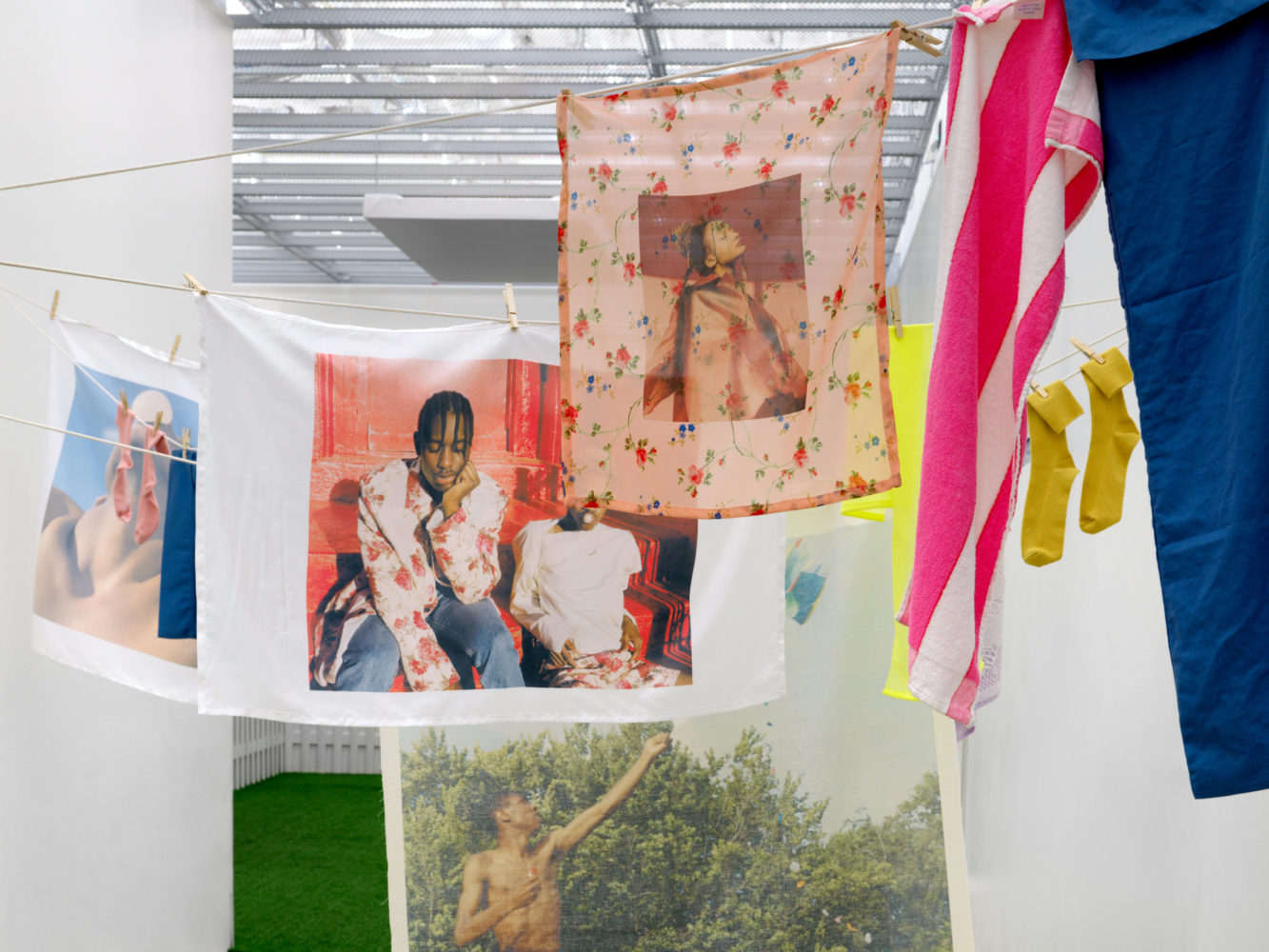
Installation image of “I Can Make You Feel Good” at the International Center of Photography (ICP), New York, courtesy of the artist and ICP.
WHITEWALL: How did your upbringing in Atlanta set the stage for a career in photography?
TYLER MITCHELL: Atlanta is a place full of a lot of complicated entanglements. I grew up in a suburb called Marietta and commuted to a private, predominately white Christian school in Buckhead. There was a lot of understanding these entanglements and seeing two sides of things, like Atlanta being a Black city at its inner core and a more white conservative suburb outer core. And figuring out your place between all of that.
Growing up, I was pretty normal, or what I suppose to be pretty normal, in this white Christian school world, and mainly into sports like basketball and football essentially until I arrived at skateboarding. By some revelation of my own, I decided I wanted to pursue skateboarding and taught myself how to skateboard on YouTube. I’d watch Tony Hawk videos and tutorials and would basically teach myself in my garage. I started to understand skateboarding on one level as an amazing sport, or pathway, to a different lifestyle. I met so many multicultural friends through skateboarding and started to understand the videography of skateboarding in an art form in and of itself, as I watched videos from people like Spike Jonze. I was invested into the whole idea of skateboarding—both as a pathway into creativity in general but also in filmmaking of skateboarding as its own art form.
I had an interest in utilizing this tool to hopefully get out more and more. And utilizing the camera to get out more and more. Everyone in Atlanta knew me as the skateboard filmmaker guy after a while. That was the start. And that brought me to New York to go to school at NYU for film.
WW: You’ve said that images were missing an autobiographical element that you wanted to see more of, and that you are reaching for “more.” What’s the “more”?
TM: When I say that about pictures of young, sensuous models being free, or just being uninhibited in their lives, I was on a subconscious level wanting to see myself as the protagonist of a lot of those stories. On one level, I hope that my work is suggesting that there can be a new protagonist for these kinds of freedoms and inhibitions in our lives—and by that I mean Black folks’ lives. And I suppose that reaching for “more” is about the suggestion of the whole body of work “I Can Make You Feel Good” and the book.
I use the word “utopia” because it’s kind of an imaginary place. It’s a proposal for a place. It’s a proposal for a place where young Black men and woman exist as freely as they want. Whether that be in motion, at rest, reclining, holding one another, jump-roping, hula-hooping. Enjoying seemingly mundane pleasures. My interest in those things is the reaching for “more” because of the ways we’ve been historically denied those things in the past.
WW: You have said you want to build a universe where people can explore “the Black joy” that can be found in everyday moments. Why?
TM: I’m interested in the mundane as a pathway to freedom. By that I mean moments that are seemingly simple pleasures—like jumping rope and hula- hooping—they are kind of moments that represent freedoms that have historically been denied. When I’m making these images that I find to be their own self-contained universe, I think those images of Black bodies moving through space—either at rest or falling in love—suggest the notion that these moments actually are our lives, rather than all the objectives that white supremacists and systemic racist structures have tried to impose on our lives.
On some other level, I’m someone who has a playful curiosity as a photographer. Those images are also an extension of me, in a way. Sometimes I’m watching a movie or a performance and I’m getting inspired, and I’m like, “I want to do that. That feels like the pinnacle of not having a worry or a care in the world looks like.” I’d like to create images that suggest that that’s possible for the people around me, too.
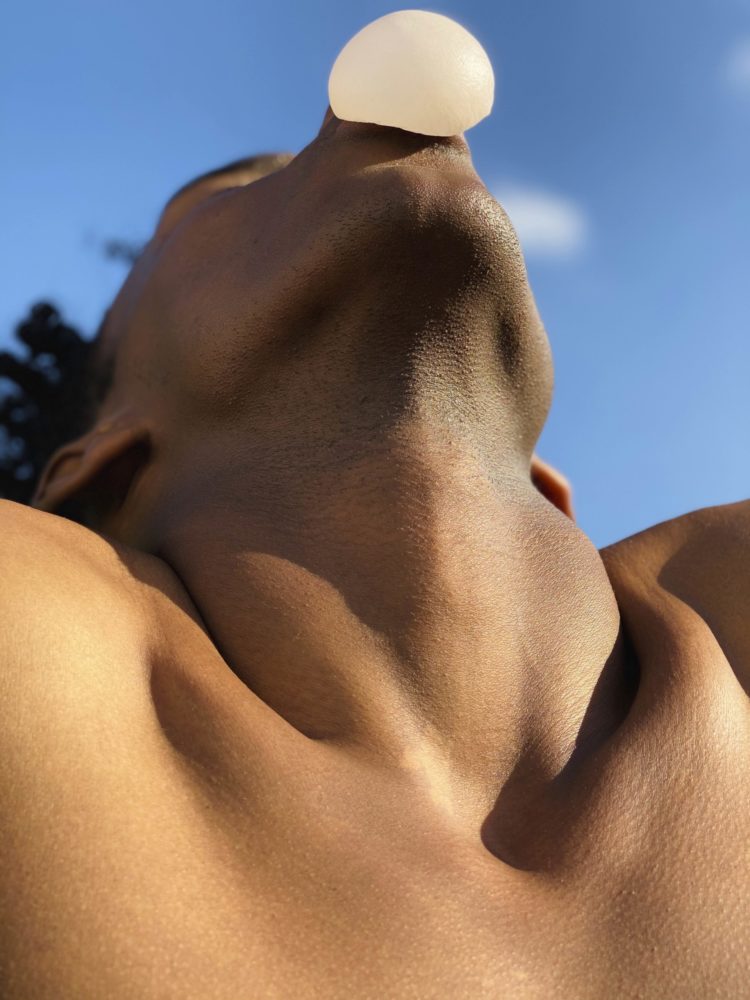
Tyler Mitchell, “Untitled (Bubblegum),” 2019, courtesy of Tyler Mitchell.
WW: How did “I Can Make You Feel Good” at Foam in Amsterdam and the International Center of Photography (ICP) in New York come about?
TM: Everything came together piece by piece. I don’t have an MFA or a fine art degree in any way, so when I was invited by them to make an exhibition, I was quite fearful of the art world’s judgment. First of all, I really respect Foam, and second of all, my photography primarily exists in commission context. Historically, it’s been beaten into us that those lines are very “uncrossoverable.”
Nonetheless, I went and had a great meeting with the curators there and started to really understand a certain portion of my work as being fixated on this Black visual utopia, and all of the characteristics that fall under that. It became this way of linking my work and less about a traditional body of work that was shot in one place or over a period of time. It’s more a series of images that were linked by aesthetic points of view that spoke to cultural or identity-based ideas, and ideas about Black life.
A lot of the work that I made for the show and the book felt important to make it playful and direct, and work for people on many levels—not just on an academic or a fine art level. The main thing for me was going from that fearful state to doing it and feeling confident. It was about tackling bringing photography, which people typically think of as a 2-D medium, to life in a gallery space and in a book. That’s mainly also about bringing to life the images and the films Idyllic Space and Chasing Pink Found Red—as installations, and as things that are slightly more immersive than 2-D works. And that’s why you get things like the laundry line, too, down the 60-foot hallway.
WW: Your monograph is an extension of the exhibition, although it stands on its own with other works included. How did producing a book come to be?
TM: That’s by way of me being a huge photo book lover and collector. What can I say other than a debut monograph is a huge moment for a photographer? Hans Ulrich Obrist, who contributed to the book, said that photographers see books as exhibitions—as the main way that our work lives on. He also said if there’s no book, there was no show. So it’s a huge thing that the exhibition comes down but the book actually lives on in people’s homes. It was also important to make an object that is carefully considered, where people look at it and see the element of craft. The book was hand-bound. It’s not just a catalogue; it’s its own art form. And hopefully, by design choices and by choices the artist or photographer made, you can feel like what it’s like to be in the exhibition through that book experience.
WW: Is it important to you to exist at the intersections of photography?
TM: Yes, I think it’s important to exist at the nexus of all of those things. I’m huge on the democratization of photography, so I think it’s important to make images on the most democratized and highly wielded camera in the world. That’s the camera everyone has in their pocket. I think it’s important to use that as a tool, as well as all of the old analogue machines that I’m using to make my images, too.
I want to exist on the whole spectrum—making books, which are analog objects that people can indulge in physically and making images that work well on Instagram and on a six-by-nine-inch screen. Existing at the intersection is super important to me, and I hope it supports why the work is super “now” in a way. It’s looking backward, but it’s also looking forward.

Installation image of “I Can Make You Feel Good” at the International Center of Photography (ICP), New York, courtesy of the artist and ICP.
WW: When you’re photographing for a brand, what is the collaborative process like when creating a message? It seems like the messaging for these campaigns may be new for some of them.
TM: It’s about ushering all of us together into some semblance of a new era. In the past, I think photographers were hired for commissions based on executionary skills—like executing a certain look or vibe to sell something. Like if you want to sell pudding, hire the guy that lights pudding cups really well. But now, when you hire someone like myself, you’re making a different proposition or gesture. It’s more social and cultural, in a way. We’re starting to understand how fashion images are more than executing or selling a certain look based on something like lighting. It’s more about identity, about the fabric of who we are, and what that image is actually saying about us as a culture and where we stand. When you are choosing to work with me, you are making that statement. That’s hopefully a gesture toward a future that, like I Can Make You Feel Good, has other protagonists at the center.
WW: If you aren’t being commissioned, what do you like to photograph?
TM: I’ve been so lucky in my commission work that it feels like my personal work, and my personal work starts to align with my commission work. The best situation is where you have utmost freedom, so the best personal moments are just the offbeat ones. Any photographer gets excited about photographing someone no one knows, and, at least for me, making them look like an amazing protagonist. That’s why “I Can Make You Feel Good” is such a fitting title, because it’s really about what the feeling is, and what the instinct is. The best personal work is made off of instinct.
WW: How have the past few months in isolation shaped you?
TM: They’ve been similar to almost anyone else who’s trying to be mindful and accountable—staying home and trying to protect others. Artistically, it’s been amazing to reflect and think about the new phase, but it also been an amazing moment to produce a book and put that out into the world. I’m so excited to have even made this book, because it went to print as the world was going into shutdown.
During this time, I think there’s an amazing demand and need for people’s interaction with things that aren’t as digital. I think people really feel that. I think the book can be a sanctuary for people. And I enjoy it because it’s like therapy for me—making this book and making these pictures. They show the type of freedoms I wished to have this year, and for the rest of my lifetime. But against the backdrop of all of that, my life’s work, which is to uplift and convey through images the vitality of Black life and our experience and our existence, that’s unchanged and unwavering. If anything, it’s edifying. And it’s reminding me of exactly just how urgent that work is.
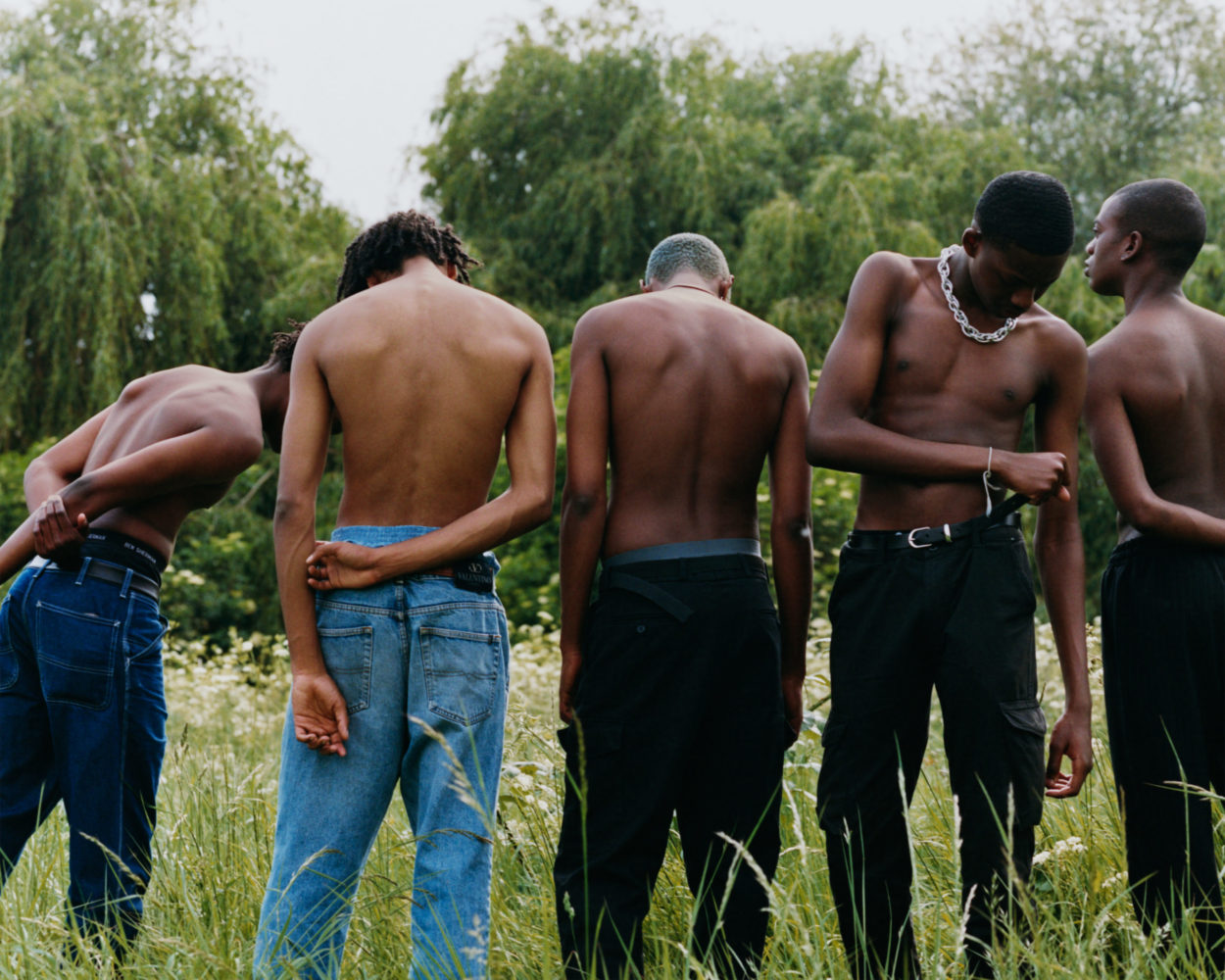
Tyler Mitchell, “Boys of Walthamstow,” 2018, courtesy of Tyler Mitchell.



